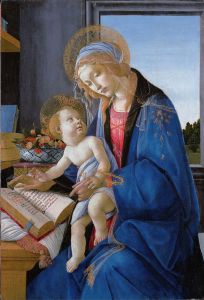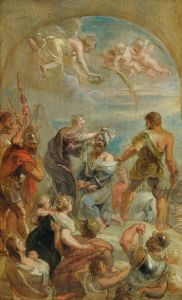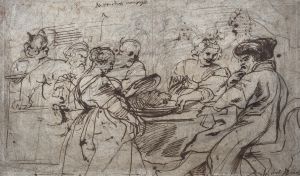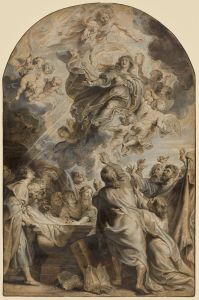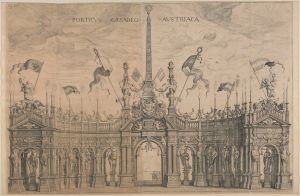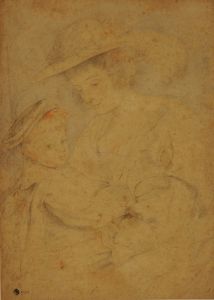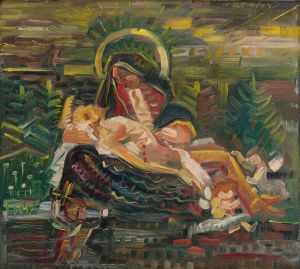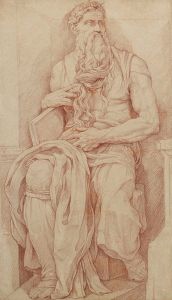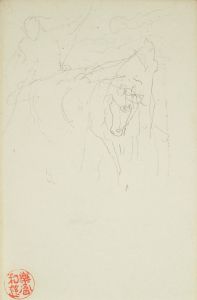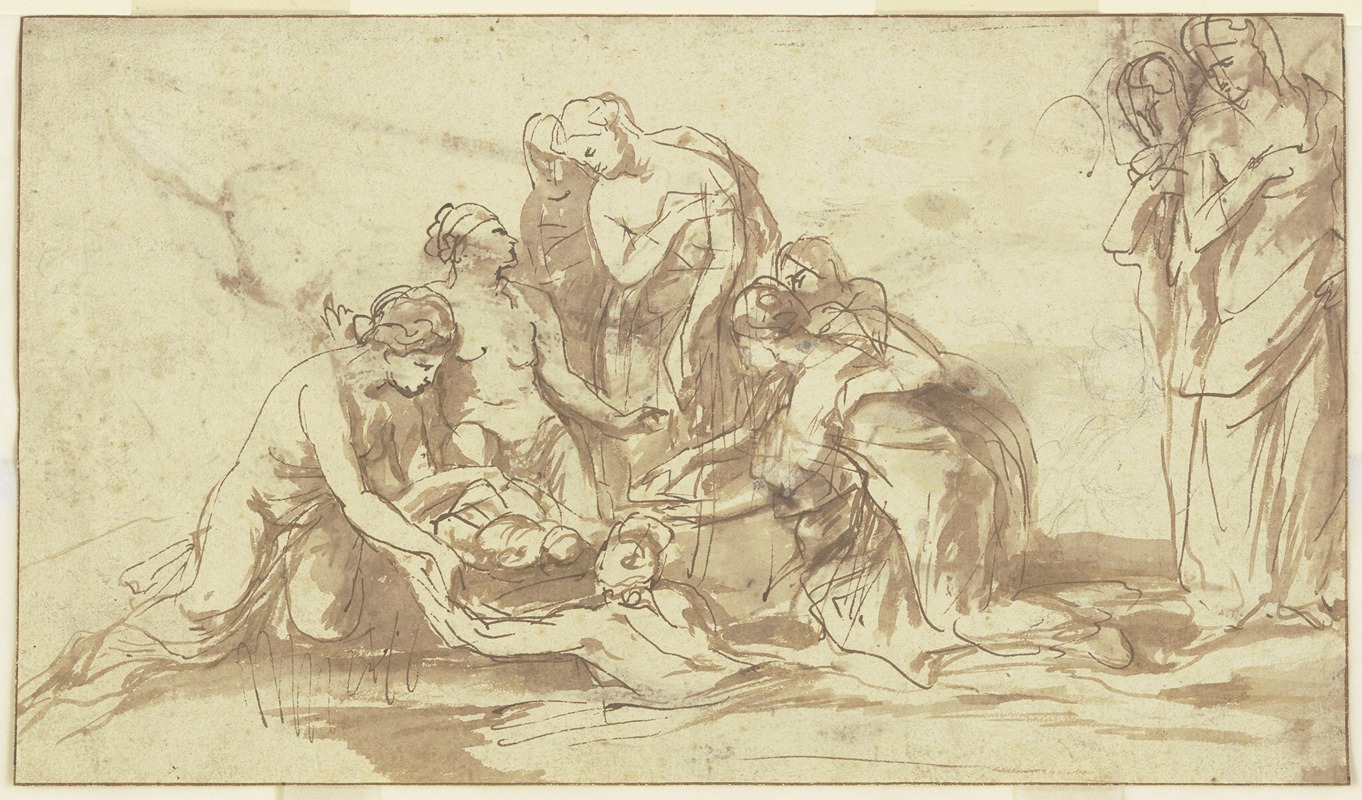
Finding of Moses
A hand-painted replica of Peter Paul Rubens’s masterpiece Finding of Moses, meticulously crafted by professional artists to capture the true essence of the original. Each piece is created with museum-quality canvas and rare mineral pigments, carefully painted by experienced artists with delicate brushstrokes and rich, layered colors to perfectly recreate the texture of the original artwork. Unlike machine-printed reproductions, this hand-painted version brings the painting to life, infused with the artist’s emotions and skill in every stroke. Whether for personal collection or home decoration, it instantly elevates the artistic atmosphere of any space.
"Finding of Moses" is a renowned painting by the Flemish Baroque artist Peter Paul Rubens. Created in the early 17th century, this artwork is a vivid representation of a biblical scene from the Old Testament. The painting illustrates the moment when the infant Moses is discovered by the daughter of Pharaoh, as described in the Book of Exodus.
Peter Paul Rubens, born in 1577, was a prolific artist known for his dynamic compositions, vibrant color palette, and masterful depiction of human figures. His works often encapsulate the grandeur and drama characteristic of the Baroque period. Rubens' "Finding of Moses" is no exception, showcasing his ability to convey narrative through expressive figures and lush landscapes.
The painting captures the pivotal moment when Moses, placed in a basket by his mother to save him from Pharaoh's decree to kill all newborn Hebrew boys, is found by Pharaoh's daughter. In Rubens' depiction, the scene is set along the banks of the Nile River. The composition is rich with detail, featuring a group of elegantly dressed women surrounding the basket. Pharaoh's daughter, often identified as the central figure, is depicted with a sense of grace and authority, reaching out towards the infant Moses. The figures are adorned in luxurious garments, reflecting Rubens' attention to texture and fabric.
Rubens' use of color is particularly noteworthy in this painting. The warm, golden tones of the figures' skin contrast with the cooler hues of the surrounding landscape, creating a harmonious balance that draws the viewer's eye to the central action. The lush greenery and flowing water of the Nile are rendered with a sense of movement and vitality, enhancing the overall dynamism of the scene.
The "Finding of Moses" is also significant for its exploration of themes such as divine intervention and destiny. The discovery of Moses is a crucial event in biblical history, leading to his eventual role as the leader who would guide the Israelites out of Egypt. Rubens' interpretation of this moment emphasizes the miraculous nature of the event and the interplay between human action and divine will.
This painting is one of several works by Rubens that depict scenes from the life of Moses, reflecting the artist's interest in biblical narratives and his ability to bring these stories to life through his art. The "Finding of Moses" is housed in the Museo del Prado in Madrid, where it continues to be admired for its artistic excellence and historical significance.
Rubens' "Finding of Moses" remains a testament to his skill as a painter and his ability to convey complex narratives through his art. The painting not only exemplifies the Baroque style but also offers insight into the cultural and religious context of the period in which it was created. Through his masterful use of composition, color, and detail, Rubens has created a work that continues to captivate audiences and inspire admiration for its beauty and storytelling power.





